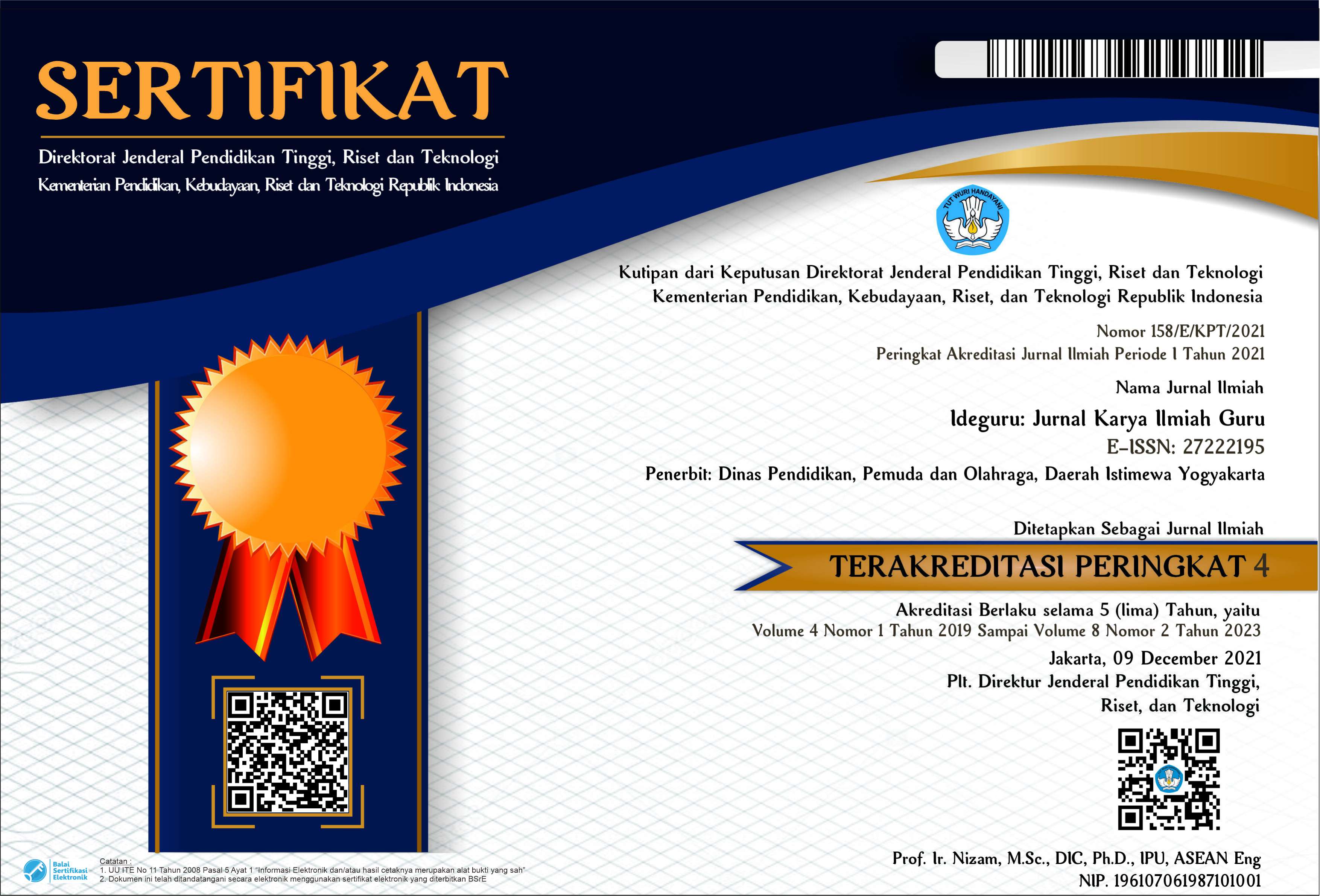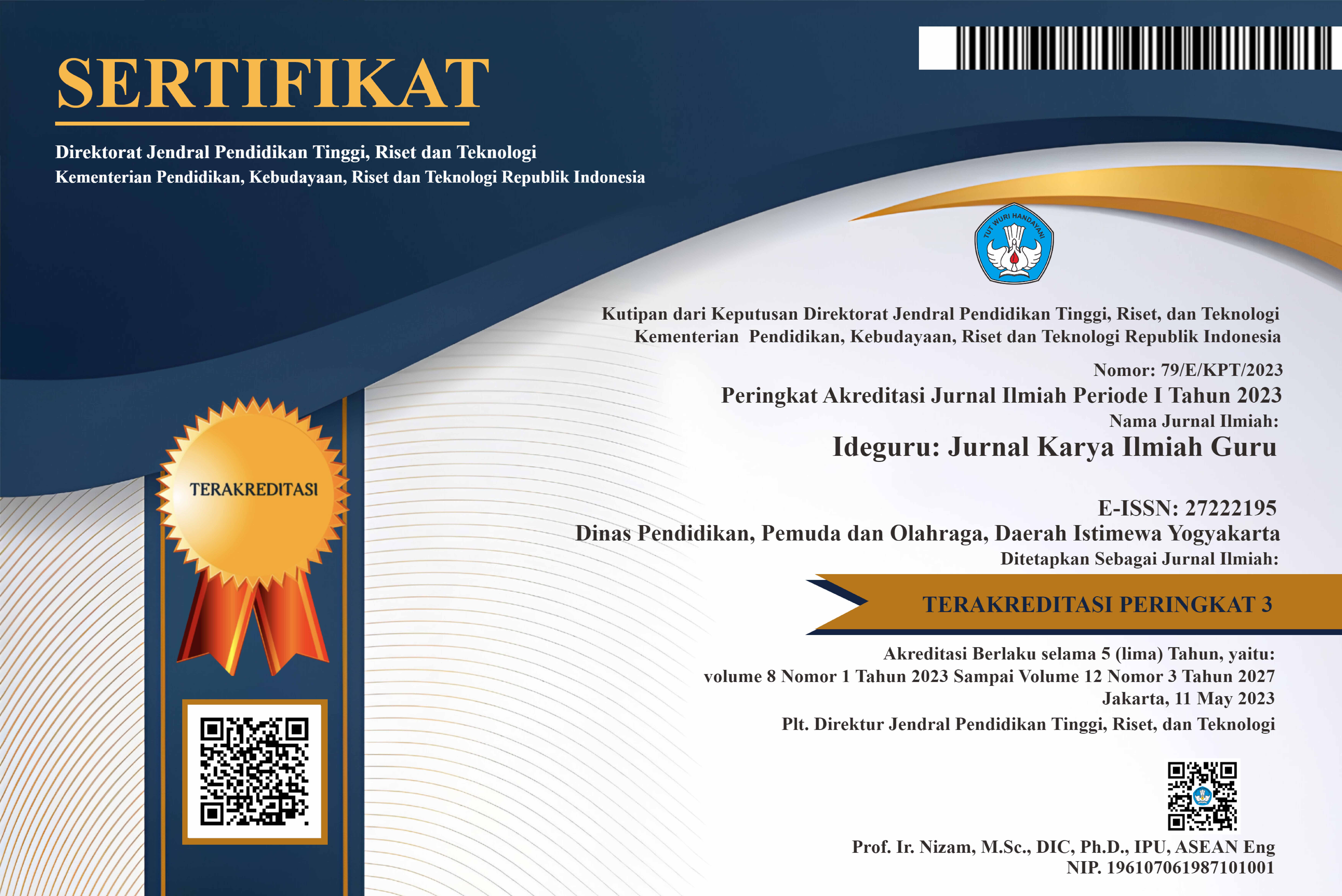Missing Concept Image dan Mis-in Concept Image pada Materi Segi Empat Ditinjau dari Gaya Kognitif
Abstract
The relationship between types of quadrilaterals is one of the concepts that students must master. However, based on literature studies, a lot of students made mistakes in determining the relationship between types of quadrilaterals. This research aims to describe missing concept images and mis-in concept images on quadrilateral concepts. When a concept's example is classified as not being an example of that concept, it is called a missing concept image; conversely, when a concept's non-example is classified as an example of that concept. A factor which can affects students' concept image is cognitive style. This research used a qualitative research design with a hermeneutic phenomenological approach. The subjects of this research were two students in 7th grade, each with field-dependent and field-independent cognitive styles. This research used two instruments, namely the GEFT test instrument to determine the type of student's cognitive style and a test instrument with two-tier multiple-choice questions to understand students' concept image of the relationship between types of quadrilaterals. The results of the research showed that missing concept images and mis-in concept images occurred in a student with field-dependent cognitive style, while in student with a field-independent cognitive style there was a mis-in concept image. The results of this research can be used as a consideration in designing learning that can minimizes concept image errors.
PDF Downloads
Copyright (c) 2024 Agustine Dwi Kurniawati Pamarna, Dadang Juandi, Al Jupri

This work is licensed under a Creative Commons Attribution 4.0 International License.

 DOI:
DOI:














